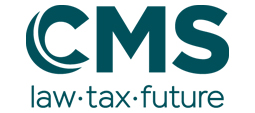The news that many of the legal markets in CEE impose stricter rules on law firm advertising and marketing than many of their Western counterparts comes as no surprise. Still, to explore this concept just a bit, for this issue, we asked law firm marketing and BD experts around CEE: “What, in your opinion, is the biggest difference between law firm marketing in your market and law firm marketing in London or New York?
The city economies in London and New York are way more competitive and volatile than country economies in the Balkans. This affects the type and quality of our marketing material. While London and NY law firms claim boutique-like qualities and agility, CEE law firms promote their one-stop-shop capacities and stability. Our London colleagues will produce a lot of shorter pieces of writing on a specific topic within a certain sector, while your typical CEE product will include a comprehensive overview of the entire practice area or a sector group. For SEE law firms, Bar-imposed limitation on advertising define our focus on in-bound marketing options and the educational, even scientific, character of our non-client material.
Jelena Bosnjak, Business Development & Marketing Manager, CMS Croatia
The US and UK legal markets have over a hundred years of history, whereas the Russian market is, after only 25 years, still relatively young. Its pioneers emerged in the early 1990s and we – Andrey Goltsblat’s team – were among them. We are still operating on the Russian market, now as part of Bryan Cave Leighton Paisner. This is a relatively young and dynamic market, where rigidity has not yet had time to set in. Every year brings change. First of all, many new players are emerging, mostly spin-offs, which is peculiar to the Russian market. In contrast, ILFs are developing through M&A. So the market is very quick-moving, with three to five law firms (including us) invariably top ranked, while the lower leagues change dynamically from year to year. These many small spin-offs grow quite quickly. They tend to have one or two major clients, so need to expand their client base and position themselves on the market. To this end, they focus on building brand awareness using a diverse range of PR and communications tools and investing in sponsorship and advertising.
As throughout the world, bigger and more mature law firms with sizeable client portfolios focus more on BD and client technics seeking to both maintain existing and develop new relationships.
The Russian business is fairly pragmatic. To qualify for a tender, track record and rankings are often crucial, so we need to demonstrate relevant experience and a client list. For example, here in Russia, it is a must to publish the firm’s client list on its website, with the clients’ consent, of course. In other markets, such disclosure might be inappropriate or prohibited, or even subject to specific laws or rules of the Bar.
In an actively evolving and highly competitive market environment, those that demonstrate the greatest creativity and innovation come out on top. So we endeavor to merge the classical marketing and PR tools used by global ILFs with new and unconventional marketing solutions tailored to the local market and focusing on our specific client segments. New technologies, Internet marketing, and social media are all available and used widely here in Russia. We have a dynamic young market and a young client base, where today’s law students might soon be working in-house and choosing a legal counsel.
Svetlana Kleimenicheva, Director of Operations and Marketing, Bryan Cave Leighton Paisner (Russia)
The main difference was the highly regulated legal marketing in CEE. The US and UK markets are way more liberal. The regulations are softening but it’s hard for the partners to implement the business and marketing driven mindset immediately. Also, these conservative markets are not ready for the US type of lawyer-ads as well. In Hungary, almost all of the special prohibitions have been lifted, but only a small group of law firms are using the marketing opportunities in their full potential – probably because the rest did not become used to it in previous decades.
Mate Bende, Managing Partner, Pro/Lawyer Consulting
This Article was originally published in Issue 5.9 of the CEE Legal Matters Magazine. If you would like to receive a hard copy of the magazine, you can subscribe here.


